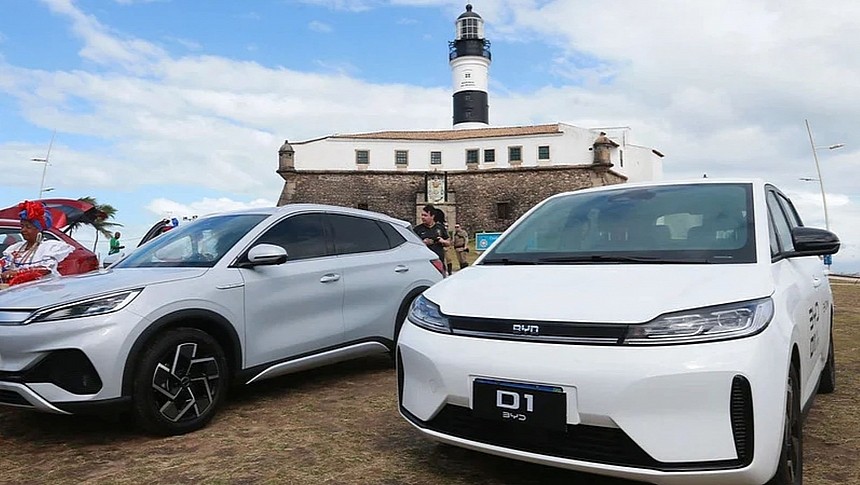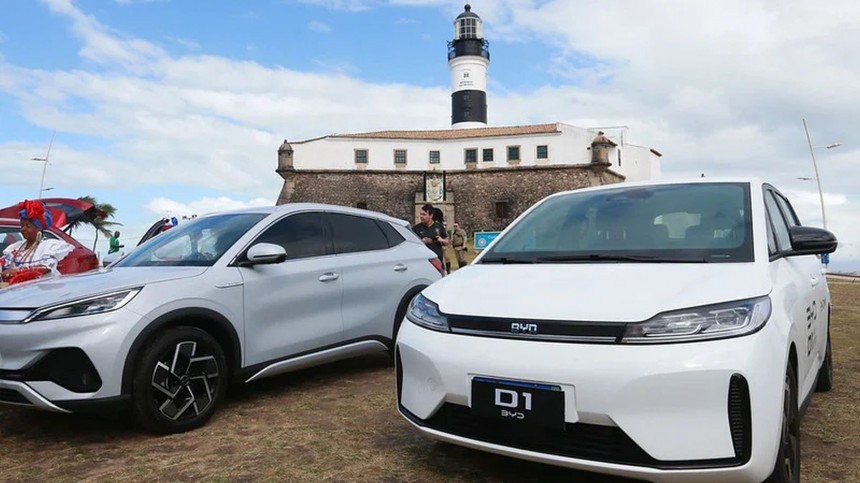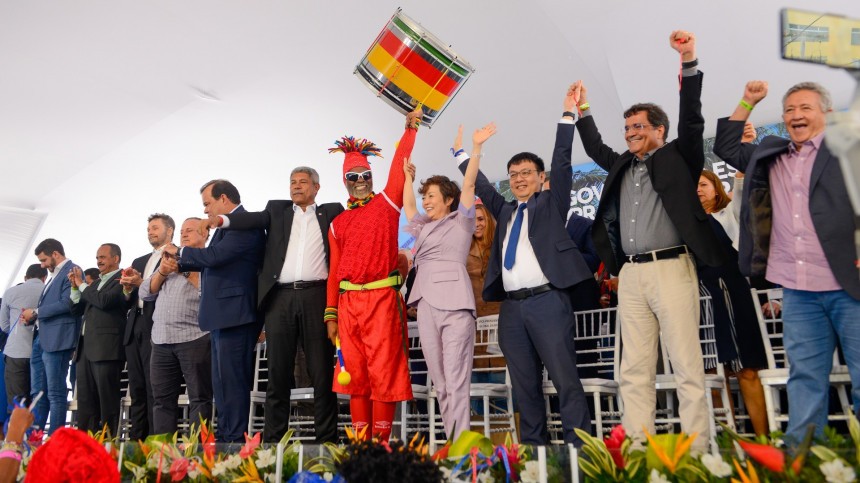In November 2022, the first reports that BYD would buy a Ford factory in Brazil emerged. At the time, the Bahia government said the Chinese automaker would close the deal, but BYD rushed to say nothing was decided at that point. It took them eight months to sign the papers and make everything official. And that local deal may have repercussions in other places.
In January, the Wall Street Journal said BYD was also interested in another Ford factory. The two main differences were that the Saarlouis plant was in Germany and was still active. Ford only plans to stop making the Focus there in 2025. From that moment on, another company may use those premises.
BYD then said that it would probably build its own factories in Europe instead of purchasing existing ones. That would work well if the automaker were planning new plants in its home market. In Europe, there are other implications that make buying an existing factory a wiser move.
First, politicians are eager to please their voters by keeping jobs in their regions instead of announcing that a plant will close and thousands of people will be unemployed. That said, they are more willing to negotiate tax incentives. Second, a factory that already operates only needs a few adjustments to keep working. It is not necessary to worry about construction, infrastructure, permits, and so forth – even if electric cars will demand new tools and machinery. On top of that, the carmaker selling such a facility would probably offer a reasonable price to close the deal. It is not just about getting rid of the premises: it has to do with the political pressures the automaker will avoid if another one takes over production and employees. Third, their workers will have to be retrained, but it is easier to deal with experienced blue-collar manpower than to start recruiting it anywhere. Finally, established logistics and a robust supply chain around the factory make it a more sensible decision to buy used than to build something new.
A while before BYD and the Bahia government made the official announcement for the new factories – yes, we are talking about three units – Ford said it had found a "major international investor" to keep the Saarlouis plant running after 2025. Martin Sander, head of Ford Werke (the automaker's German unit), said on June 30 that the American company had "taken a big step" that week in preserving jobs. The future owner would create around 2,500 jobs and would transform the plant. That's pretty much what BYD will do to Ford's former industrial complex in Brazil.
As the Bahia government had already announced in November 2022, the Chinese automaker will invest R$3 billion ($620 million at the current exchange rate) to have three factories in Camaçari. The first will make electric chassis for buses and trucks. The second will process iron phosphate and lithium and export these raw materials to China, while the third will manufacture battery electric vehicles (BEVs) and plug-in hybrids (PHEVs). The initial production capacity will be 150,000 units, but the car factory can be expanded to make 300,000 BEVs and PHEVs.
BYD's announcement comes at strange times for the automotive industry in Brazil. Several companies suspended production there because the demand for new cars dropped sharply in that market. Credit access is more difficult, and Brazilians used to buy cars based on how much they could pay every month, not on the vehicle's actual cost. The Brazilian government has tried to lower prices with a temporary tax suspension for entry-level cars, but it backfired spectacularly. Only more expensive vehicles are selling, but their volumes do not justify keeping large factories open. BYD's plans are either targeting export markets or are an act of faith. It may also be the case that the tax incentives were just too attractive to ignore.
BYD disclosed it is already hiring the workers that will put its Brazilian factories to work in the second half of 2024. Previously, the Bahia government said two plants would be ready by October 2024, while the last one would pump out vehicles by January 2025. Apparently, the Chinese carmaker managed to anticipate that.
Considering that Ford was also involved in the deal, BYD and the American automaker may have reached a broader negotiation that could include the German factory. For BYD, the timing would probably be adequate. If it can enter the Saarlouis factory in 2025 and make its cars there in the same year, that would help it deal with the demands some governments are pushing for the European Union to increase import duty rates for Chinese cars. They are asking for reciprocity because China charges a 25% import tax on European vehicles while Chinese cars pay 10% to enter Europe. A local factory could prevent such concerns.
So far, BYD's vehicles are not selling that well in the Old Continent, which is no surprise taking into account that most of the brand's models have just started to be distributed in a few countries. Next year will tell us how well BYD BEVs and PHEVs were received by European customers and – above all – if it makes sense to have a factory there. BYD already said it wanted more than one. The Dolphin and the Seal are the vehicles that would ensure a reasonable production volume for any plant in European soil. We'll probably only learn more about that by 2025.
BYD then said that it would probably build its own factories in Europe instead of purchasing existing ones. That would work well if the automaker were planning new plants in its home market. In Europe, there are other implications that make buying an existing factory a wiser move.
First, politicians are eager to please their voters by keeping jobs in their regions instead of announcing that a plant will close and thousands of people will be unemployed. That said, they are more willing to negotiate tax incentives. Second, a factory that already operates only needs a few adjustments to keep working. It is not necessary to worry about construction, infrastructure, permits, and so forth – even if electric cars will demand new tools and machinery. On top of that, the carmaker selling such a facility would probably offer a reasonable price to close the deal. It is not just about getting rid of the premises: it has to do with the political pressures the automaker will avoid if another one takes over production and employees. Third, their workers will have to be retrained, but it is easier to deal with experienced blue-collar manpower than to start recruiting it anywhere. Finally, established logistics and a robust supply chain around the factory make it a more sensible decision to buy used than to build something new.
As the Bahia government had already announced in November 2022, the Chinese automaker will invest R$3 billion ($620 million at the current exchange rate) to have three factories in Camaçari. The first will make electric chassis for buses and trucks. The second will process iron phosphate and lithium and export these raw materials to China, while the third will manufacture battery electric vehicles (BEVs) and plug-in hybrids (PHEVs). The initial production capacity will be 150,000 units, but the car factory can be expanded to make 300,000 BEVs and PHEVs.
BYD's announcement comes at strange times for the automotive industry in Brazil. Several companies suspended production there because the demand for new cars dropped sharply in that market. Credit access is more difficult, and Brazilians used to buy cars based on how much they could pay every month, not on the vehicle's actual cost. The Brazilian government has tried to lower prices with a temporary tax suspension for entry-level cars, but it backfired spectacularly. Only more expensive vehicles are selling, but their volumes do not justify keeping large factories open. BYD's plans are either targeting export markets or are an act of faith. It may also be the case that the tax incentives were just too attractive to ignore.
Considering that Ford was also involved in the deal, BYD and the American automaker may have reached a broader negotiation that could include the German factory. For BYD, the timing would probably be adequate. If it can enter the Saarlouis factory in 2025 and make its cars there in the same year, that would help it deal with the demands some governments are pushing for the European Union to increase import duty rates for Chinese cars. They are asking for reciprocity because China charges a 25% import tax on European vehicles while Chinese cars pay 10% to enter Europe. A local factory could prevent such concerns.
So far, BYD's vehicles are not selling that well in the Old Continent, which is no surprise taking into account that most of the brand's models have just started to be distributed in a few countries. Next year will tell us how well BYD BEVs and PHEVs were received by European customers and – above all – if it makes sense to have a factory there. BYD already said it wanted more than one. The Dolphin and the Seal are the vehicles that would ensure a reasonable production volume for any plant in European soil. We'll probably only learn more about that by 2025.














